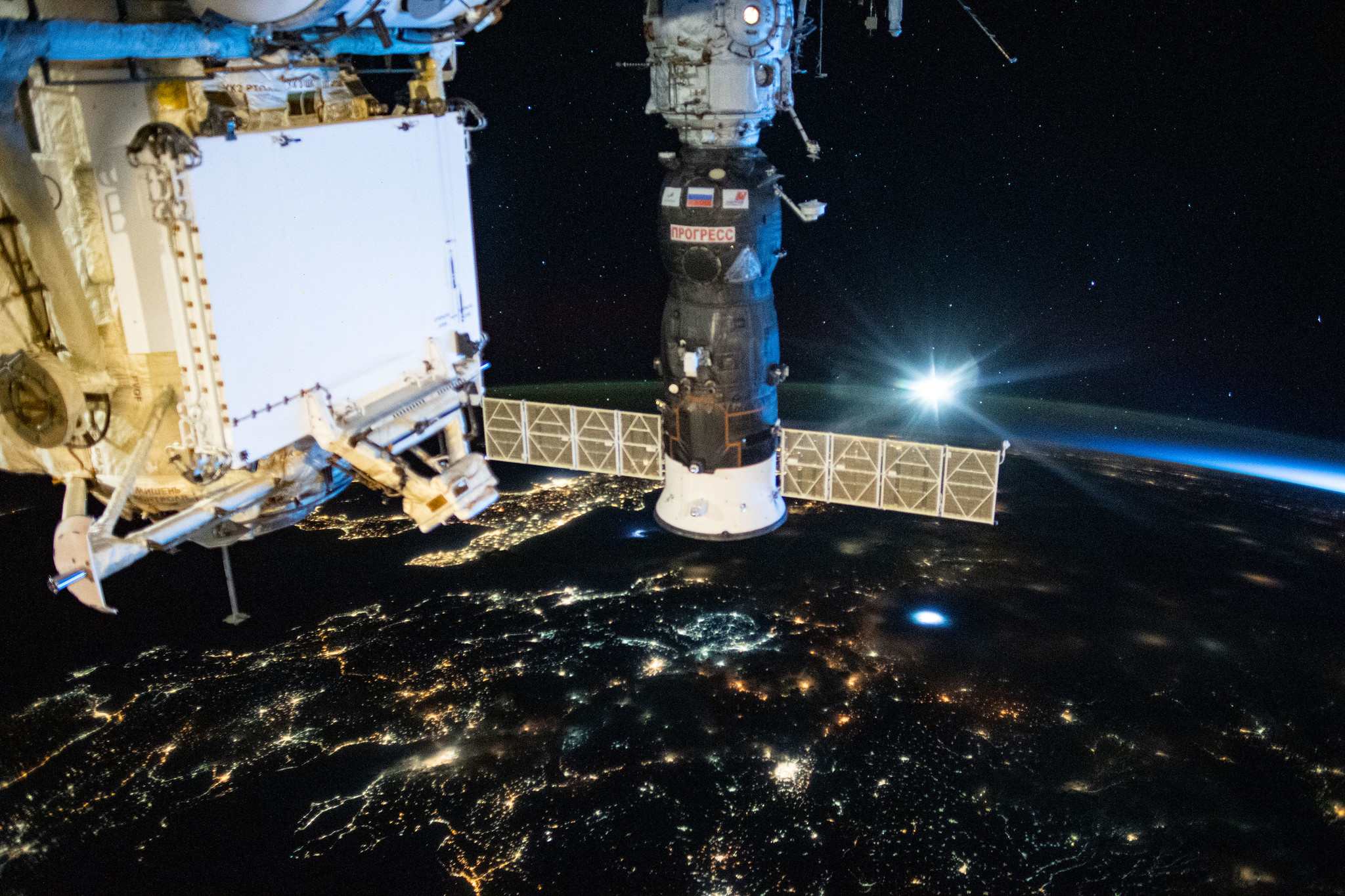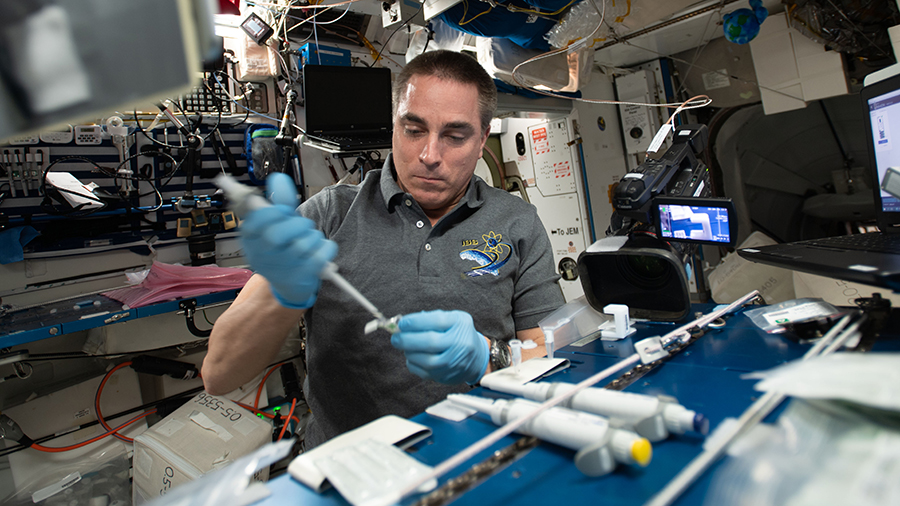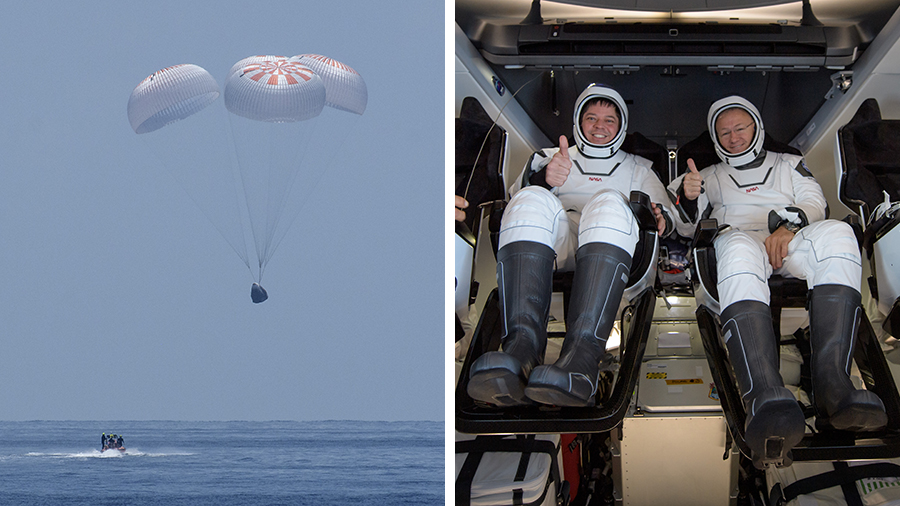Station Team Starts Workweek Researching Physics and Biotech

Advanced space physics and biotechnology research kicked off the week for the Expedition 63 trio aboard the International Space Station.
Commander Chris Cassidy of NASA started Monday operating a variety of science experiments that observe different microgravity phenomena. He continued researching water droplets in the U.S. Destiny laboratory module to promote water conservation and improve water pressure for space and Earth facilities.
The veteran astronaut, whose first mission was in 2009, also worked in Japan’s Kibo laboratory module maintaining the BioLab incubator. He opened up the space biology research device, that houses microbes, tissue cultures and small invertebrates, and checked fans, sensors and relative humidity.
Cassidy also joined his crewmates, cosmonauts Anatoly Ivanishin and Ivan Vagner, for body mass measurements aboard the orbiting lab today. The device uses a Newtonian method that applies a known force to an individual with the resulting acceleration providing a mass calculation in microgravity.
Ivanishin also spent Monday splitting his time between Earth observations and biomedical research. The three-time station visitor photographed global landmarks to observe and forecast the effects of man-made and natural catastrophes. He then moved onto to exploring the survivability of enzymes and bone marrow cells in the weightless environment.
First-time space flyer Ivan Vagner worked all day in the station’s Russian segment on biotechnology research. He collected microbe samples from the air and lab surfaces for incubation and analysis to understand and monitor conditions for safe and sterile space research gear.
Mark Garcia
Powered by WPeMatico







